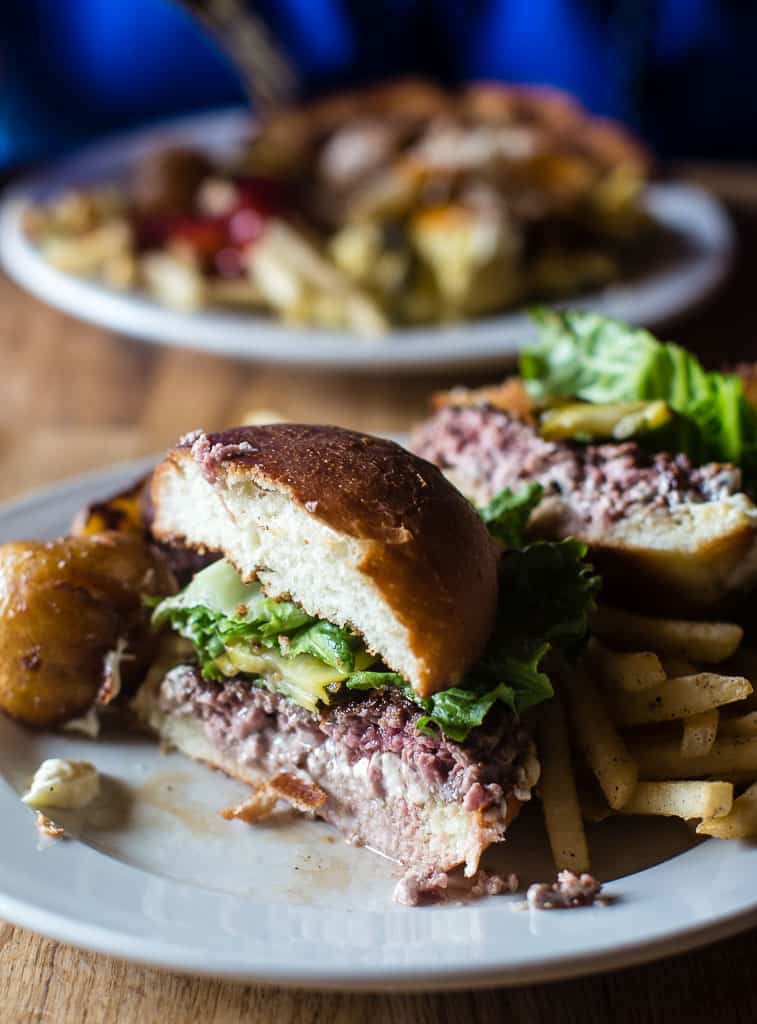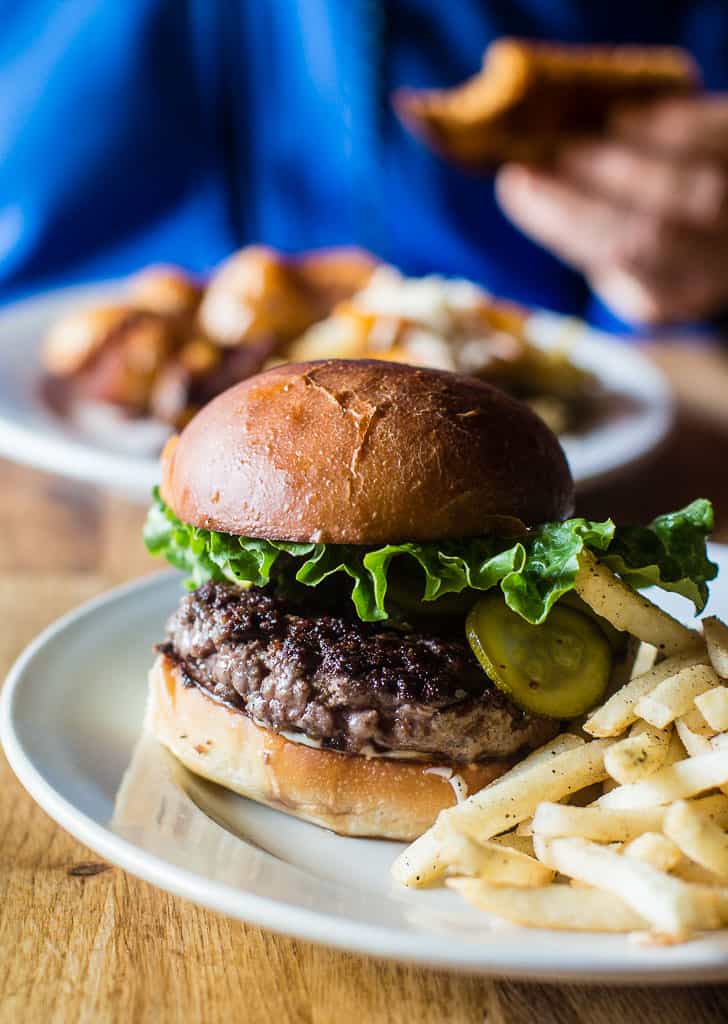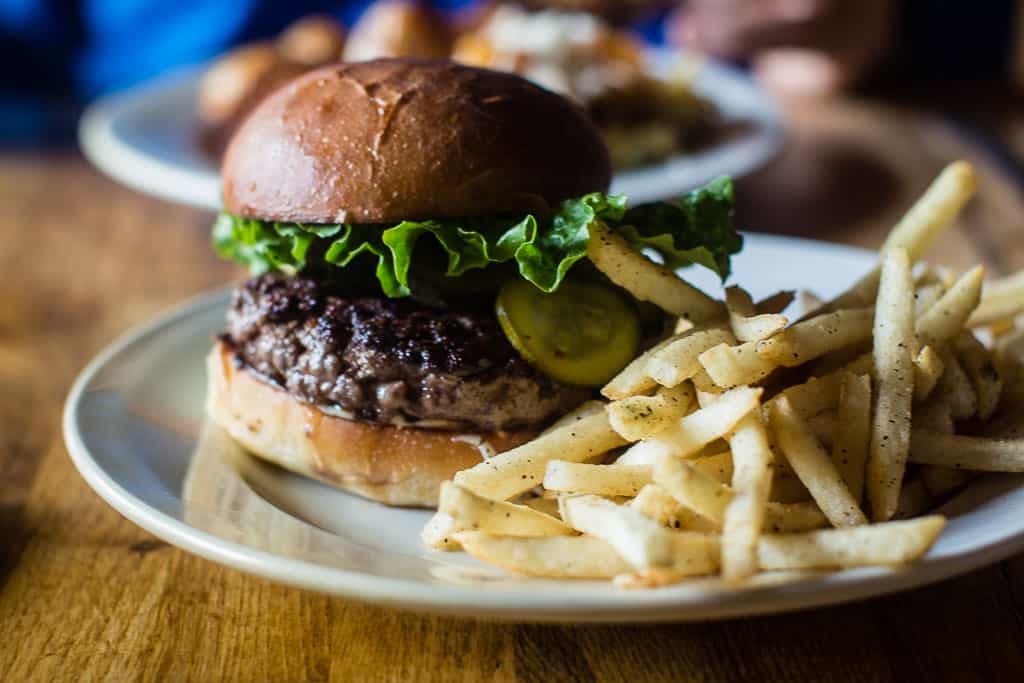Ever wondered why some steaks are so tender and juicy while others feel like chewing on a rubber band? The secret lies in understanding grain and gristle. Yep, you heard that right—grain and gristle are the unsung heroes of meat preparation, and they play a massive role in how your meals turn out. If you're serious about becoming a grill master or a kitchen ninja, this is the article for you.
Imagine biting into a perfectly cooked ribeye—juicy, flavorful, and melting in your mouth. Now picture the opposite: a tough, chewy piece of meat that makes you question life choices. Grain and gristle are the reasons behind these contrasting experiences. They determine not only the texture but also the taste of your meat. So buckle up, because we're about to deep-dive into the world of grain and gristle, and trust me, it's going to be delicious.
Whether you're a home cook or a professional chef, mastering the art of grain and gristle can elevate your cooking game. From selecting the right cut to understanding how to prepare it, every step matters. In this guide, we'll break down everything you need to know, from the basics to advanced techniques. Let's get started, shall we?
Read also:Linda Purl Hot The Journey Of An Iconic Figure In Hollywood
What is Grain and Gristle Anyway?
Let's start with the basics. Grain refers to the alignment of muscle fibers in meat, while gristle is the tough, silvery connective tissue found in certain cuts. Think of grain as the "grain" in wood—it affects how you cut and prepare the meat. Gristle, on the other hand, is like the tough guy at the bar—hard to break down but essential to the overall structure. Both play a crucial role in how your meat turns out.
Why Should You Care About Grain?
Cutting against the grain is one of the most important techniques in cooking. If you slice meat with the grain, you're essentially making it tougher to chew. But if you cut against the grain, you're breaking those fibers apart, resulting in a more tender bite. It's like the difference between cutting through a rope versus cutting it into smaller strands. Get it right, and your guests will be asking for seconds.
What About Gristle?
Gristle might sound intimidating, but it's not all bad. Sure, it can make some cuts of meat tougher if not handled properly, but it also adds flavor and texture when cooked correctly. The key is to either break it down through slow cooking methods or choose cuts that have less gristle. It's all about balance, and once you get the hang of it, you'll be unstoppable.
Understanding the Science Behind Grain and Gristle
Now that we've covered the basics, let's dive a little deeper into the science. Muscle fibers in meat are made up of proteins like collagen and elastin. These proteins are what give meat its structure and texture. When you cook meat, these proteins break down, making the meat more tender. But if there's too much gristle or if you don't cut against the grain, the proteins can stay intact, resulting in a tougher bite.
How Does Grain Affect Flavor?
Grain doesn't just affect texture—it also impacts flavor. When you cut against the grain, you're releasing more juices and flavors with each bite. It's like unlocking a treasure chest of taste. Plus, certain cuts with visible grain patterns, like ribeye or flank steak, tend to have more marbling, which means more flavor. So next time you're at the butcher shop, pay attention to the grain—it could make all the difference.
Breaking Down Gristle
Gristle might seem like an obstacle, but it can actually enhance your cooking if you know how to handle it. Slow cooking methods like braising or sous vide can break down the collagen in gristle, turning it into gelatin. This not only makes the meat more tender but also adds richness and depth to the flavor. It's like turning a tough guy into a softie—well, almost.
Read also:King Nair The Ultimate Guide To The Gaming Phenomenon Taking Over The World
Selecting the Right Cuts for Grain and Gristle
Not all cuts of meat are created equal when it comes to grain and gristle. Some cuts have a more pronounced grain pattern, while others have more gristle. Knowing which cuts to choose can make your cooking experience smoother and more enjoyable.
Best Cuts for Tender Meat
If you're looking for tender meat, go for cuts like ribeye, filet mignon, or sirloin. These cuts have a fine grain pattern and minimal gristle, making them perfect for quick cooking methods like grilling or pan-searing. Plus, they're packed with flavor, so you don't need to do much to make them shine.
Cuts with More Gristle
For those who love a challenge, cuts like brisket, chuck roast, or short ribs are where it's at. These cuts have more gristle, but they also have more flavor. The key is to cook them low and slow, allowing the collagen to break down and the flavors to meld together. It's a labor of love, but trust me, it's worth it.
Techniques for Cutting Against the Grain
Cutting against the grain is one of the most important techniques in cooking, and it's surprisingly easy once you get the hang of it. Here's how to do it:
- Identify the grain pattern in the meat
- Position your knife perpendicular to the grain
- Make thin, even slices
It might take a little practice, but once you get it right, you'll notice a huge difference in the tenderness of your meat. And let's be honest, who doesn't love tender, juicy meat?
Tips for Beginners
If you're new to cutting against the grain, here are a few tips to help you out:
- Use a sharp knife—dull knives make it harder to cut precisely
- Take your time—rushing can lead to mistakes
- Practice on cheaper cuts before moving on to more expensive ones
Remember, practice makes perfect. The more you do it, the better you'll get.
Cooking Methods to Tame Gristle
As we mentioned earlier, gristle can be tamed with the right cooking methods. Here are a few techniques to help you break it down:
Braising
Braising involves cooking meat in liquid at a low temperature for an extended period. This method is perfect for cuts with more gristle, as the slow cooking process breaks down the collagen, making the meat tender and flavorful. Think pot roast or beef stew—comfort food at its finest.
Sous Vide
Sous vide is a cooking technique where meat is sealed in a vacuum bag and cooked in a water bath at a precise temperature. This method allows you to cook meat to perfection without overcooking it. It's great for breaking down gristle while maintaining the integrity of the meat. Plus, it's super easy once you get the hang of it.
Common Mistakes to Avoid
Even the best chefs make mistakes, but by being aware of them, you can avoid them. Here are a few common mistakes to watch out for:
- Cutting with the grain instead of against it
- Overcooking meat, which can make it tough
- Not letting meat rest before slicing
By avoiding these mistakes, you'll be well on your way to becoming a grain and gristle master.
How to Fix Tough Meat
If you end up with tough meat, don't panic. There are a few things you can do to salvage it:
- Shred it instead of slicing it
- Make a stew or soup out of it
- Use it in tacos or sandwiches, where texture isn't as important
Remember, even tough meat can be delicious with the right preparation.
Expert Tips for Mastering Grain and Gristle
Want to take your grain and gristle game to the next level? Here are a few expert tips:
- Experiment with different marinades to enhance flavor
- Try dry-aging meat for deeper flavor and tenderness
- Invest in a meat thermometer to ensure perfect doneness
These tips might take your cooking to the next level, but remember, the most important thing is to have fun with it.
The Future of Grain and Gristle
As food trends continue to evolve, grain and gristle will always remain relevant. With the rise of plant-based meats and alternative proteins, understanding grain and gristle becomes even more important. Whether you're cooking traditional cuts of meat or experimenting with new ingredients, the principles remain the same.
Plant-Based Meats and Grain
Plant-based meats are designed to mimic the texture and flavor of real meat, and grain plays a crucial role in that. Manufacturers are constantly working to improve the alignment of fibers in plant-based meats to make them more realistic. It's an exciting time for food science, and we can't wait to see what the future holds.
Conclusion: Elevate Your Cooking Game
Grain and gristle might not be the sexiest topics in the culinary world, but they're essential to understanding how to cook great meat. By mastering the art of grain and gristle, you can take your cooking to the next level and impress your friends and family. So next time you're at the butcher shop, pay attention to the grain and gristle—your taste buds will thank you.
Don't forget to leave a comment or share this article with your friends. And if you're hungry for more cooking tips, check out our other articles. Happy cooking!
Table of Contents
- What is Grain and Gristle Anyway?
- Understanding the Science Behind Grain and Gristle
- Selecting the Right Cuts for Grain and Gristle
- Techniques for Cutting Against the Grain
- Cooking Methods to Tame Gristle
- Common Mistakes to Avoid
- Expert Tips for Mastering Grain and Gristle
- The Future of Grain and Gristle
- Conclusion: Elevate Your Cooking Game


